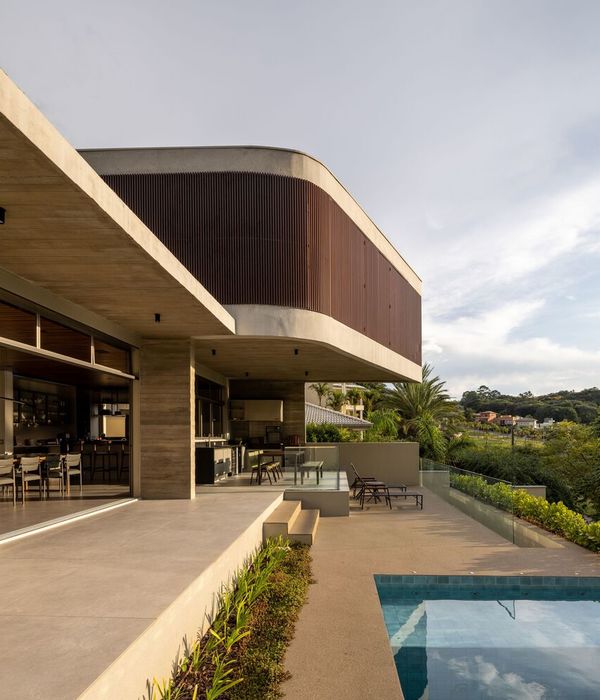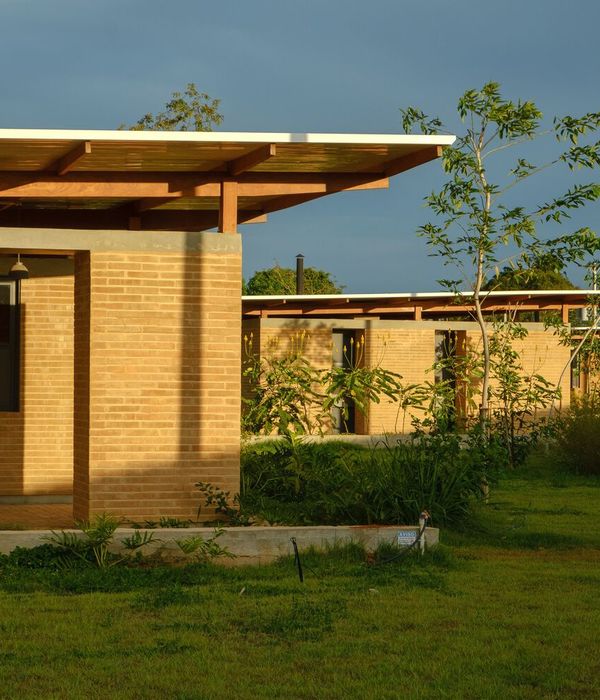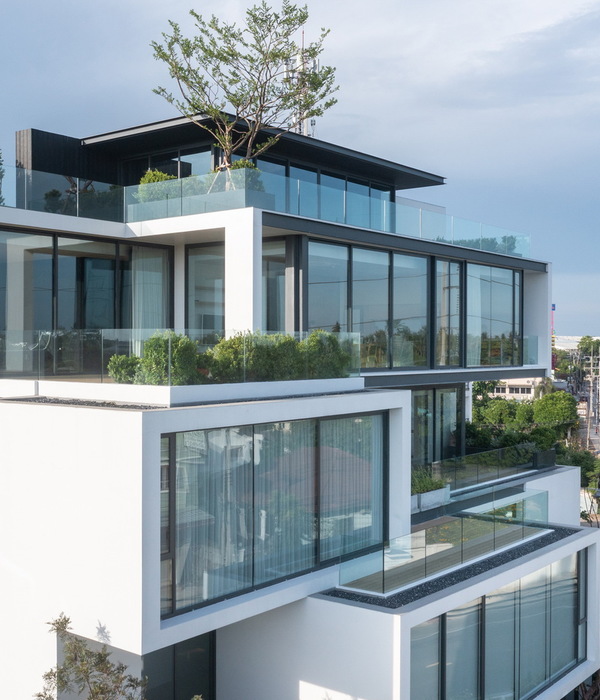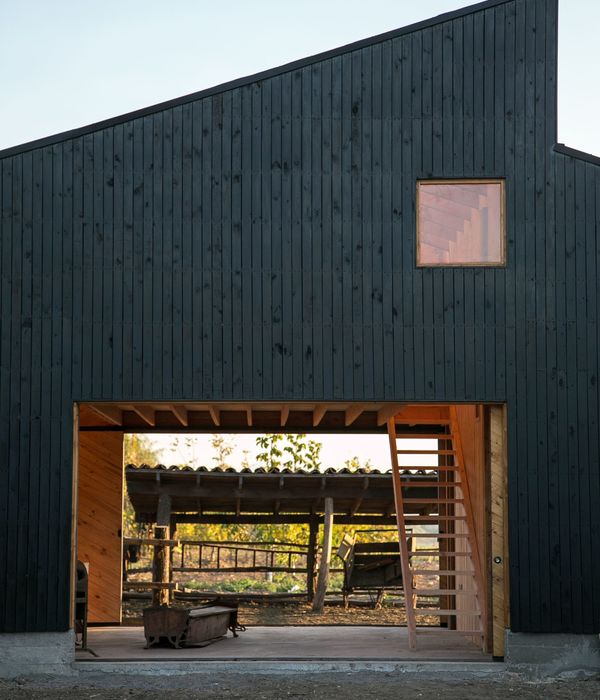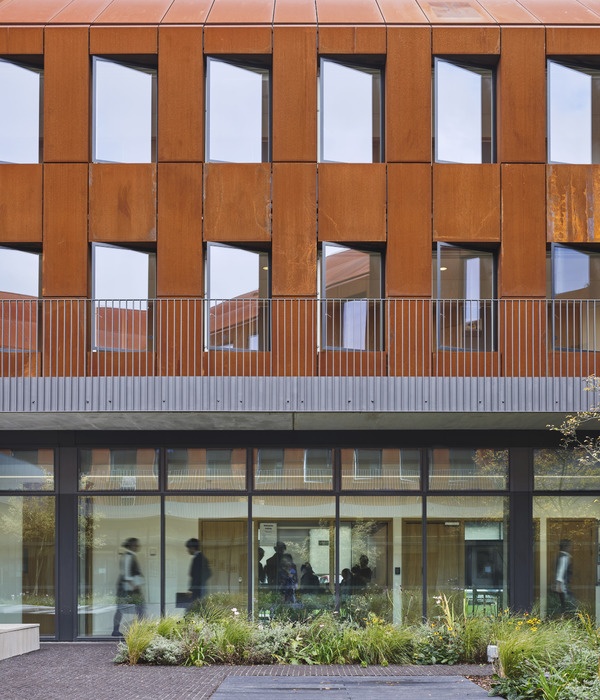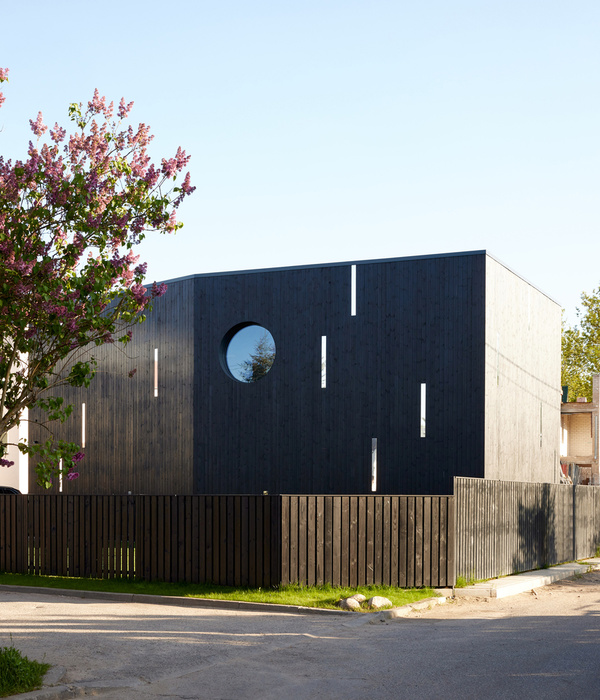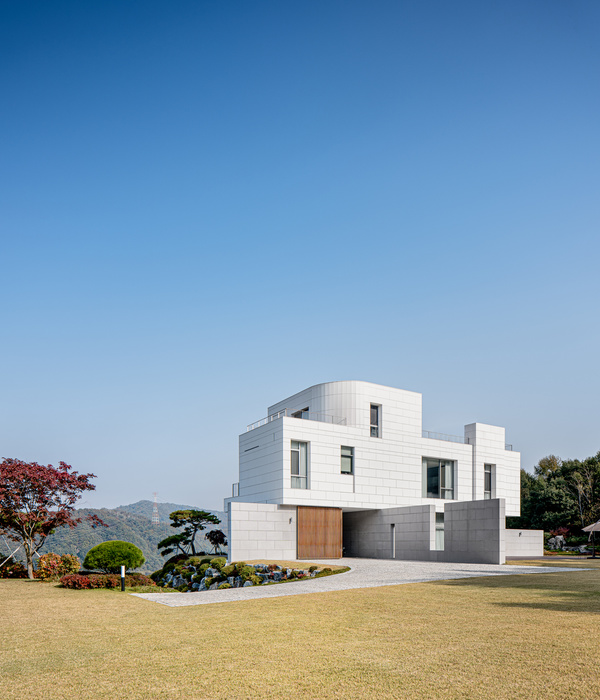该项目是由6a architects事务所设计完成的一幢新住宅楼,它位于伦敦北部威尔伯福斯的街角处。该住宅的业主是一位艺术家也是餐馆老板,她向设计师展示了一系列自己的照片,照片描绘了日常物品的堆放情形,而这些图像会让人回想起这里曾经的砖厂,机械店和钟表店。 而这些历史情节恰好与不规则的场地相结合,启发设计师运用重复和调整的方法去实施该项目的设计。
6a architects has completed a new residential building on a corner site on Wilberforce Road, North London. The client – an artist and restaurateur – briefed the architects with a series of her own photographs depicting the stacking of everyday objects; these visual cues echoed the history of the plot, which over the years had housed a brickyard, a mechanic and a clock shop. These reference points, in combination with the irregularity of the site, prompted an approach to the project based on repetition and adjustment.
▼位于街角的建筑外览,the exterior view at the corner
该建筑由三间公寓组成,根据该场地奇怪的几何形态,建筑采用不对称的混凝土框架构成。四层房屋由两根混凝土柱作为支撑,柱子穿过建筑物,这样的结构有助于限定主要的矩形生活空间,与展开其他的房间结构。不同于隐藏结构,该建筑结构暴露于房屋内部,房间内的柱子和横梁也被用于划分大型的生活空间,和作为家具或家居用品的背景。
▼建筑底层入口,the building entrance on the bottom
Comprising three apartments, the building shifts to the odd geometry of the plot with an asymmetric concrete frame. The four floors are propped by two concrete columns which rise through the building, helping to define the primary rectangular living spaces from which the other rooms unfold. Rather than hiding the structure, it is expressed on the inside; the columns and beams are used to subdivide large living spaces and punctuate clusters of furniture or domestic objects.
▼建筑房屋由两根混凝土柱支撑,柱子穿过建筑物,the building are propped by two concrete columns which rise through the building
▼房间内的柱子和横梁被用于划分大型的生活空间,the columns and beams are used to subdivide large living spaces
▼混凝土结构作为家具或家居用品的背景,the concrete structure is used to punctuate clusters of furniture or domestic objects
该建筑的平面设计随楼层改变,每个100平方米的公寓都采用独特的布置方式,以此展现其各自特点,并放大每个空间的朝向特点。半地下室公寓利用双层高的厨房空间和隐蔽式庭院将日光引入中央客厅,而一楼公寓则利用场地宽度提供居住者一个横向的视野。 建筑顶部的两层构成了第三套公寓,设计师建造了一座黄铜衬里的凉廊在上层庭院中,从这里可以俯瞰整个街道。位于屋顶的卧室通过内部窗户与高大的起居空间相连,另一个露台则相对隐蔽的布置在栏杆后面的顶层空间。虽然空间形态各异,但这三间公寓共享共同的设计主题,四层空间都充满变化。 每间公寓的凉廊和露台构成了建筑物外部房间,而位于顶层和底层的双层高房间分别水平翻转,形成了公寓中间的开放式起居空间。
▼剖面图,the section
The building’s plan alters floor by floor, with each 100sqm apartment arranged uniquely to amplify its character and maximise the idiosyncrasies of each space’s orientation. The semi-basement apartment draws daylight deep into a central living room via a top-lit double-height kitchen and concealed courtyard, while the first floor flat provides lateral views through the width of the site. Two floors at the top of the building form the third apartment, where the courtyard space of the lower floor is replaced by a brass-lined loggia overlooking the street. Bedrooms contained within the roof are connected via internal windows with a tall living space, while another secret terrace is hidden on the top floor behind the parapet.Whilst spatially different, the three apartments share common themes, variations of which play out over all four floors. The loggias and terraces in each apartment form external rooms set within the building’s footprint, while the double-height rooms of the top and bottom floors are flipped horizontally to produce the open-plan living space of the middle apartment.
▼位于半地下室的双层高的厨房空间,a top-lit double-height kitchen located the semi-basement apartment
▼黄铜衬里的凉廊在上层的庭院里,a brass-lined loggia on the courtyard space of the roof floor
建筑的灰泥外墙由一种传统的石灰混合物作为材料,手工涂抹而成。在干燥过程中,工匠刮擦石灰表面,从而使其板岩骨料显现出来,这样的工艺为深色的外墙带来了丰富的质感、多变的色彩和阴影。内部饰面保持简洁的建筑原有材料饰面,这样的表面与精心挑选的其他配件相结合,营造出更加精致优雅的氛围。 混凝土框架和平板结构表面采用帆布附在石灰泥墙上的方式作为饰面,同时花旗松胶合地板和陶瓷相搭配,为整个房屋增添了更多日常的质感和温暖氛围。
The stucco façade, a traditional lime mix developed by the practice, was hand-applied, its slate aggregate revealed by scratching the lime surface during drying, bringing a rich texture, varied colour and shadows to the dark external walls. Finishes inside are kept simple with the use of everyday construction materials, their careful and artful assembly bringing a refined elegance. The concrete frame and slabs provide a raw canvas upon which lime-slurried walls, Douglas-fir plywood floors and ceramics add informal texture and warmth.
▼ 混凝土框架和平板结构表面采用帆布附在石灰泥墙上的方式作为饰面,the concrete frame and slabs provide a raw canvas upon which lime-slurried walls
▼地下两层平面图,the lower & upper ground plan
▼一&二层平面图,the first & second ground plan
▼顶层平面图,the roof plan
▼立面图,the elevation
6a architects Structural Engineer: Price & Myers Environmental Engineer: Max Fordham LLP Quantity Surveyor: Artelia Contractor: John Perkins Projects
{{item.text_origin}}


